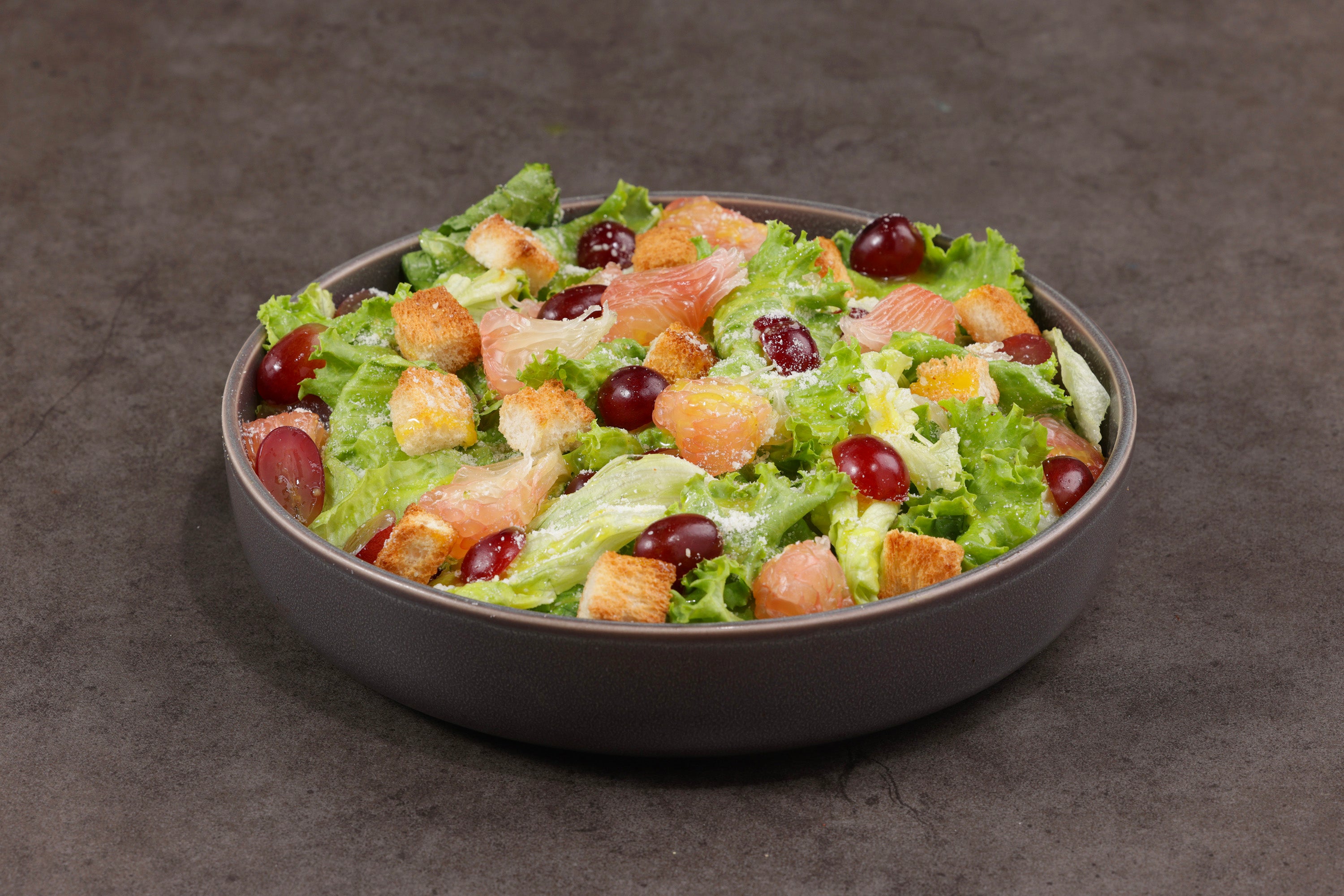

Articles
What Is In A Garden Salad
Modified: December 6, 2023
Discover the secrets of creating a delicious garden salad with our comprehensive gardening guide. Learn how to grow and harvest fresh ingredients for the perfect mix of flavors.
(Many of the links in this article redirect to a specific reviewed product. Your purchase of these products through affiliate links helps to generate commission for Storables.com, at no extra cost. Learn more)
Introduction
A garden salad is a refreshing and versatile dish that is often enjoyed as a side or main course. It offers a vibrant burst of flavors, colors, and textures that can tantalize the taste buds. But what exactly is a garden salad and what goes into making one?
A garden salad, also known as a tossed salad or green salad, typically consists of a combination of fresh vegetables, greens, and sometimes fruits. It is a popular choice for those seeking a healthy and nutritious meal.
One of the defining features of a garden salad is the variety of ingredients it can incorporate, making it a versatile dish that can suit different preferences and dietary needs. From crisp lettuce to juicy tomatoes and crunchy cucumbers, each ingredient adds its own unique flavor and texture to the overall salad.
In this article, we will explore the various ingredients commonly found in a garden salad and discuss some delicious dressing options to elevate the flavors to new heights.
Key Takeaways:
- Garden salads are a versatile and nutritious dish that celebrates the abundance of fresh vegetables and greens. With a variety of colorful and flavorful ingredients, paired with delicious dressings, they offer a delightful and satisfying culinary experience.
- The vibrant and refreshing nature of garden salads allows for creativity and personalization, making them a perfect choice for incorporating seasonal produce and exploring new flavor combinations. They not only please the palate but also provide numerous health benefits, supporting a healthy lifestyle.
Read more: What Is The Divot In A Salad Fork?
Definition of a Garden Salad
A garden salad is a type of salad that primarily consists of fresh vegetables, greens, and sometimes fruits. It is typically served cold and can be enjoyed as a refreshing side dish or as a light and healthy main course. The term “garden” refers to the use of fresh, garden-grown ingredients that are incorporated into the salad.
Garden salads are known for their vibrant colors, crisp textures, and varied flavors. They provide a delicious and nutritious way to incorporate a range of vegetables into your diet. Plus, they can be customized to suit individual taste preferences and dietary restrictions.
What sets a garden salad apart from other types of salads is the emphasis on fresh, raw ingredients. While other salads may include ingredients like cooked proteins or grains, a garden salad typically focuses on showcasing the natural flavors and textures of the vegetables.
Another characteristic of a garden salad is the use of a light dressing or vinaigrette. This enhances the flavor of the salad without overwhelming the freshness of the vegetables. It allows the natural flavors of the vegetables to shine through, providing a delightful balance of taste.
Overall, a garden salad is a versatile and healthy dish that celebrates the abundance of fresh vegetables and greens. It offers a refreshing and nutritious culinary experience, making it a popular choice among salad enthusiasts and health-conscious individuals.
Ingredients of a Garden Salad
A garden salad is a vibrant medley of fresh vegetables and greens that come together to create a harmonious blend of flavors, textures, and colors. While the ingredients can vary based on personal preference and availability, there are several key components that often make up a classic garden salad.
Lettuce
Lettuce is the base of a garden salad, providing a crisp and refreshing foundation. There are various types of lettuce to choose from, including romaine, iceberg, butterhead, and leaf lettuce. Each variety offers its own unique flavor and texture, adding depth to the overall salad.
Tomatoes
Tomatoes are a staple ingredient in a garden salad, adding a burst of juicy sweetness. Choose ripe and flavorful tomatoes, such as cherry tomatoes or vine-ripened varieties, for the best taste. They also provide a vibrant pop of color to the salad.
Read more: How To Store Salad
Cucumbers
Cucumbers add a cool and crunchy element to a garden salad. They have a mild flavor and a high water content, which helps to hydrate the salad. Thinly slice or dice the cucumbers to ensure even distribution throughout the salad.
Carrots
Carrots bring a touch of sweetness and a satisfying crunch to the salad. They can be grated or thinly sliced to add color and texture. Carrots are also a great source of vitamins and antioxidants, making them a nutritious addition to any garden salad.
Radishes
Radishes offer a peppery and slightly spicy flavor, which adds a refreshing zing to the salad. They are typically sliced thinly and provide a vibrant splash of color. Radishes are also rich in vitamin C and other nutrients, making them a healthy choice for a garden salad.
Bell Peppers
Bell peppers come in a variety of colors, such as red, yellow, and green, and add a crunchy texture and sweet flavor to the salad. They are packed with vitamins A and C, as well as antioxidants, making them a nutritious addition to any garden salad.
Red Onions
Red onions provide a distinct and slightly pungent flavor to the salad. They can be thinly sliced or diced and add a pop of vibrant color. Red onions also contain antioxidants and anti-inflammatory compounds, offering health benefits alongside their taste.
These are just a few examples of the common ingredients found in a garden salad. Feel free to explore and experiment with other vegetables and greens to create your own unique variation of this refreshing dish. The key is to choose fresh, high-quality ingredients that complement each other and combine to create a delicious and nutritious garden salad.
Lettuce
Lettuce is one of the foundational ingredients of a garden salad, providing a crisp and refreshing base. With its delicate leaves and mild flavor, lettuce adds texture and acts as a vehicle for other salad ingredients. There are various types of lettuce to choose from, each with its own unique characteristics and taste.
Romaine lettuce is a popular choice for garden salads due to its crunchy texture and slightly bitter taste. Its elongated leaves are sturdy enough to hold up to heavier ingredients and dressings, making it an excellent option for those who prefer a heartier salad.
Iceberg lettuce, with its dense, tightly packed leaves, offers a refreshing and crunchy bite. Although it has a reputation for being less nutritionally dense compared to other lettuce varieties, it still provides hydration and adds a satisfying crunch to salads.
Butterhead lettuce, also known as Bibb or Boston lettuce, has tender, buttery leaves that provide a melt-in-your-mouth texture. It has a mild flavor and is often chosen for its delicate and soft leaves that make for an enjoyable eating experience.
Leaf lettuce, known for its loose, frilly leaves, comes in various colors, including green and red. It has a mild and slightly sweet flavor, adding a beautiful pop of color and texture to garden salads. Its versatility and vibrant appearance make it a popular choice for salad lovers.
When selecting lettuce for your garden salad, it is crucial to choose fresh, crisp leaves that show no signs of wilting or discoloration. Look for lettuce heads with vibrant color and no signs of bruising or browning. If you prefer convenience, pre-washed and bagged lettuce varieties are readily available in most grocery stores.
Preparing lettuce for your garden salad is simple. Begin by separating the leaves and discarding any damaged or wilted ones. Rinse the leaves thoroughly under cold water to remove any dirt or debris. Once washed, gently pat the leaves dry or use a salad spinner to remove excess moisture.
For added visual appeal and texture, tear the lettuce leaves into bite-sized pieces or leave them whole. This allows the dressing and other salad ingredients to coat the lettuce evenly. Remember, the presentation of a garden salad is just as important as its taste!
Lettuce not only provides a refreshing crunch but also offers a range of health benefits. It is low in calories and packed with vitamins A and K, folate, and fiber. Additionally, lettuce contains antioxidants that help protect against cell damage.
Whether you prefer the crunch of romaine, the crispness of iceberg, the tenderness of butterhead, or the vibrancy of leaf lettuce, incorporating lettuce into your garden salad is a fantastic way to enhance its flavor, texture, and nutritional value.
Tomatoes
Tomatoes are a staple ingredient in garden salads, bringing a burst of juicy sweetness and vibrant color to the mix. They are not only delicious but also rich in essential nutrients and antioxidants, making them a valuable addition to any salad.
There are countless varieties of tomatoes, each with its own unique flavor profile and texture. Cherry tomatoes are small and round, adding a burst of sweetness to the salad. They come in a variety of colors, including red, yellow, and orange, which can add visual appeal to your garden salad. Additionally, grape tomatoes are similar in size and flavor to cherry tomatoes, making them a popular choice as well.
Vine-ripened tomatoes are larger and have a rich, full flavor. They are often chosen for their exceptional taste and vibrant red color. These tomatoes are typically sold still attached to the vine and are left to ripen fully, allowing the natural sugars to develop, resulting in a sweeter and more complex flavor.
Beefsteak tomatoes are known for their size and meaty texture. They have a mild flavor and are often used as a substantial ingredient in garden salads. The thick slices of beefsteak tomatoes provide a juicy bite and add a satisfying element to the salad.
When selecting tomatoes for your garden salad, look for ones that are firm, blemish-free, and have a vibrant color. The scent of a ripe tomato should be aromatic and slightly sweet. If possible, choose locally grown or homegrown tomatoes for the freshest and most flavorful experience.
Preparing tomatoes for your garden salad is relatively simple. Start by rinsing them under cool water to remove any dirt or residue. Depending on your preference, you can either chop them into bite-sized pieces, halve cherry tomatoes, or slice larger tomatoes into wedges or rounds.
Aside from adding flavor and color to your salad, tomatoes also offer a range of health benefits. They are rich in vitamin C, potassium, and antioxidants like lycopene, which is known for its potential to lower the risk of certain diseases.
When it comes to dressing a garden salad, tomatoes can be used as the primary source of moisture. As they naturally release their juices when cut, they help create a flavorful and refreshing base for the dressing to cling to.
Whether you prefer the sweetness of cherry tomatoes, the robustness of vine-ripened tomatoes, or the substantial bite of beefsteak tomatoes, incorporating tomatoes into your garden salad adds a burst of flavor, texture, and nutritional value.
So the next time you’re creating a refreshing salad, don’t forget to slice up some juicy tomatoes to elevate the taste and aesthetics of your garden salad.
Cucumbers
Cucumbers are a refreshing and versatile ingredient that adds a cool and crunchy element to garden salads. With their subtle flavor and high water content, cucumbers offer a hydrating and refreshing bite, making them a popular choice for adding a crisp texture to salads.
There are various types of cucumbers available, including slicing cucumbers and Persian cucumbers. Slicing cucumbers, with their thick skin and mild flavor, are commonly used in garden salads. Persian cucumbers, on the other hand, are smaller, tender-skinned, and seedless, making them a convenient option for salads.
When selecting cucumbers for your garden salad, look for ones that are firm, smooth, and free of blemishes. The skin should have a vibrant green color. If possible, choose organic cucumbers to ensure they are pesticide-free.
Preparing cucumbers for your garden salad is simple. Start by washing them under cool water to remove any dirt or wax coating. While some people prefer to peel the cucumber, leaving the skin intact adds a pop of color and provides additional nutrients and fiber.
Next, you can choose to slice the cucumbers into rounds, dice them into cubes, julienne them into thin strips, or use a vegetable peeler to create ribbons. The shape and size of the cucumber pieces can be adjusted based on your personal preference and the overall aesthetic you want to achieve in your garden salad.
Cucumbers not only add crunch and freshness to your salad but also offer a range of health benefits. They are low in calories and high in water content, making them a hydrating choice. Cucumbers are also a good source of vitamins and minerals, including vitamin K, vitamin C, potassium, and magnesium.
In addition to their nutritional value, cucumbers can help balance out the flavors and textures of other salad ingredients. Their mild taste acts as a complement to stronger-flavored vegetables and dressings, bringing harmony to the overall salad. They also provide a cooling sensation, which can balance out spicier flavors if present in the salad.
Cucumbers can be used in various salad recipes beyond the traditional garden salad. They work well in Mediterranean salads, refreshing summer salads, or even in Asian-inspired salads. Their versatility and ability to enhance the overall eating experience make cucumbers a beloved ingredient in salad-making.
So the next time you’re preparing a garden salad, don’t forget to include the crisp and hydrating addition of cucumbers. Their refreshing taste and satisfying crunch will elevate the flavors and textures of your salad, creating a delightful and enjoyable culinary experience.
Read more: What Gardeners Need
Carrots
Carrots are not only vibrant and visually appealing but also add a touch of sweetness and satisfying crunch to garden salads. With their distinct flavor and versatility, carrots are a popular ingredient that brings both taste and nutritional value to the table.
Carrots come in various colors, including orange, purple, yellow, and white, each offering its own unique flavor and health benefits. Orange carrots are the most common variety and are known for their sweet flavor and crisp texture.
When selecting carrots for your garden salad, choose ones that are firm, smooth, and brightly colored with no signs of soft spots or wilting. Smaller carrots or baby carrots are often more tender and sweeter in taste, making them an excellent choice for salads.
To prepare carrots for your garden salad, start by rinsing them under cold water to remove any dirt or debris. Carrots can be grated, thinly sliced, diced, or cut into matchstick-sized pieces, depending on your preference.
Carrots not only add a vibrant pop of color to your salad but also offer a host of health benefits. They are rich in beta-carotene, an antioxidant that is converted into vitamin A in the body, promoting healthy vision and immune function.
In addition to vitamin A, carrots are a good source of other essential nutrients, including vitamin K, vitamin C, potassium, and fiber. Their fiber content aids in digestion and contributes to a feeling of fullness, making them a valuable addition to a filling and healthy garden salad.
Adding carrots to your garden salad enhances both the flavor and texture. The gentle sweetness of carrots provides a pleasant contrast to the bitterness of greens or the acidity of certain dressings. The crunchy texture of carrots adds a satisfying bite, creating a well-rounded salad experience.
Carrots are incredibly versatile and can be included in various salad combinations. They complement a range of ingredients, including nuts, seeds, fruits, and different types of dressing. Their ability to add both visual appeal and nutritional value makes them a popular choice among salad enthusiasts.
So the next time you’re assembling a garden salad, don’t forget to incorporate the vibrant and nutritious goodness of carrots. They will not only elevate the taste and appearance of your salad but also provide a range of health benefits.
Radishes
Radishes are an often underestimated addition to garden salads, offering a refreshing and zesty flavor that adds a pleasant kick. These crisp and colorful root vegetables have a peppery taste that can elevate the overall flavor profile of your salad.
There are several varieties of radishes available, each with its own unique characteristics and flavors. Common types include red radishes, daikon radishes, and watermelon radishes. Red radishes are the most common variety, known for their bright red skin and white flesh. Daikon radishes are larger in size and have a milder flavor, while watermelon radishes are known for their stunning appearance, with a pale green exterior and a vibrant pink center.
When selecting radishes for your garden salad, look for those that are firm and have smooth skin. Avoid radishes that are soft or have any signs of shriveling or discoloration. The smaller radishes tend to be more tender and have a milder flavor, making them ideal for salads.
To prepare radishes for your garden salad, start by washing them thoroughly under cold water to remove any dirt or debris. Trim off the ends and remove any wilted or damaged leaves. Radishes can be sliced thinly or cut into small wedges, depending on your preference.
One of the unique characteristics of radishes is their peppery flavor. This adds a refreshing zing to your garden salad, balancing out the sweetness of other ingredients. The spicy and crisp nature of radishes also provides a satisfying texture, enhancing the overall eating experience.
In addition to their vibrant flavor, radishes offer a range of health benefits. They are low in calories and rich in antioxidants, vitamins, and minerals. Radishes contain vitamin C, which supports immune function, and they are also a good source of fiber, aiding digestion and promoting a feeling of fullness.
Radishes can be a versatile ingredient in garden salads, adding both color and a unique flavor profile. They pair well with other salad ingredients such as leafy greens, citrus fruits, and creamy dressings. The addition of radishes can bring a pop of color and a refreshing burst of flavor to your salad.
So the next time you’re preparing a garden salad, consider including radishes to add a zesty and invigorating element. Their spicy kick and refreshing crunch will bring a delightful twist to your salad creation.
Bell Peppers
Bell peppers are a versatile and colorful addition to garden salads, offering a crisp texture and sweet flavor that enhances the overall taste profile. These vibrant vegetables come in a variety of colors, including red, yellow, orange, and green, adding visual appeal to your salad.
When selecting bell peppers for your garden salad, look for those that are firm and have a glossy skin. The flesh should feel dense and the pepper should have a vibrant color. Each color of bell pepper has its own unique taste and sweetness level, so you can choose based on your preference or create a medley of colors for added visual interest.
To prepare bell peppers for your garden salad, start by rinsing them under cool water to remove any dirt or residue. Slice off the top of the pepper, remove the seeds, and cut it into thin strips or small chunks. Including a variety of colors and sizes adds a visually appealing element to your salad.
Bell peppers offer a sweet and crisp crunch, bringing both flavor and texture to your garden salad. Their natural sweetness balances out the other flavors in the salad, and their crunchy bite adds a satisfying element. Bell peppers also have a mild and refreshing taste that complements a wide range of ingredients.
In addition to their taste and texture, bell peppers are packed with vitamins and antioxidants. They are an excellent source of vitamin C, which supports immune function and collagen production. Bell peppers also contain vitamin A, vitamin B6, and fiber, making them a nutritious addition to your salad.
Bell peppers can be enjoyed in a variety of ways in your garden salad. They can be used raw for maximum crunch and flavor, or you can roast or grill them to add a smoky and slightly charred taste. You can also stuff bell peppers with a salad mixture or slice them into rings for a unique presentation.
Furthermore, different colored bell peppers offer slightly different flavors and nutritional profiles. For example, red bell peppers are the ripest and sweetest, while green bell peppers have a slightly bitter taste. Yellow and orange bell peppers fall in between, offering a balance of sweetness and mildness.
The versatility of bell peppers allows them to be paired with a wide range of ingredients in your garden salad. They can complement leafy greens, tomatoes, cucumbers, and various dressings and vinaigrettes. The combination of ingredients creates a well-rounded and flavorful salad.
So next time you’re preparing a garden salad, don’t forget to incorporate the colorful and nutritious goodness of bell peppers. Their sweet crunch and vibrant hues will add a delightful visual and taste experience to your salad creation.
Red Onions
Red onions are a flavorful and colorful addition to garden salads, providing a distinct taste and a pop of vibrant color. With their pungent and slightly sweet flavor, red onions add a unique element to salads, enhancing the overall taste profile with their zesty kick.
When selecting red onions for your garden salad, look for ones that are firm and have a deep red or purple skin. The outer layer should be papery and free from any signs of mold or soft spots. Red onions are known for their vibrant hue, which adds visual appeal to your salad presentation.
To prepare red onions for your garden salad, start by peeling off the outer layer. Slice off the root end, then cut the onion in half. Thinly slice the onion into half-moons or chop it into small pieces. Soaking the sliced onions in ice water for about 10 minutes can help reduce their sharpness and mellow out the flavor if desired.
Red onions add a distinct, slightly pungent flavor to your salad. They provide a zesty kick that balances out the sweetness of other vegetables or dressings. Red onions lend an added layer of complexity and depth to the overall taste profile of the salad.
Aside from their flavor, red onions offer a range of health benefits. They are a good source of fiber, vitamin C, and antioxidants. Red onions also contain compounds that have been associated with anti-inflammatory and antimicrobial properties, making them a valuable addition to a nutritious garden salad.
Red onions can be used in various ways in your garden salad. You can mix them directly into the salad or sprinkle them on top as a garnish. They work well with a variety of salad ingredients, including leafy greens, tomatoes, cucumbers, and even fruits. Their versatility allows you to create a salad with a complex flavor profile.
However, it’s important to note that red onions have a strong flavor, so they may not be suitable for those who are sensitive to the pungency of onions. If you prefer a milder flavor, you can soak the sliced onions in water before adding them to the salad, or you can opt for a milder onion variety, such as sweet onions, instead.
So the next time you’re preparing a garden salad, consider adding red onions to bring a zesty and vibrant element to your creation. Their unique flavor and striking color will add depth and character to your salad experience.
Read more: What Do Gardeners Do
Dressings for Garden Salad
A well-dressed garden salad can make all the difference in elevating its flavors and tying together the various ingredients. From tangy vinaigrettes to creamy dressings, there is a wide range of choices to suit your taste preferences. Here are some popular dressings that complement the fresh and crisp nature of a garden salad.
Basic Vinaigrette
A basic vinaigrette is a classic and versatile dressing that pairs well with garden salads. It typically consists of oil, vinegar (such as balsamic, red wine, or apple cider), Dijon mustard, honey or maple syrup, salt, and pepper. The oil emulsifies with the vinegar to create a smooth and tangy dressing that enhances the natural flavors of the salad ingredients.
Ranch Dressing
Ranch dressing is loved for its creamy texture and flavorful blend of herbs and spices. It is typically made with a base of buttermilk, mayo, sour cream, or yogurt, combined with herbs like dill, chives, and parsley, and seasoned with garlic powder, onion powder, salt, and pepper. Ranch dressing adds a cool and tangy element to garden salads, complementing the vegetables with its creamy richness.
Italian Dressing
Italian dressing is a zesty option that adds a robust flavor to garden salads. It is commonly made with a combination of olive oil, vinegar (such as red or white wine vinegar), herbs (like oregano, basil, and parsley), garlic, onion powder, and sometimes a touch of sugar or honey. Italian dressing brings a tangy and slightly spicy kick to the salad, giving it a Mediterranean-inspired flair.
Read more: How To Store Egg Salad
Balsamic Vinaigrette
Balsamic vinaigrette is a popular choice for its sweet and tangy taste. It blends the richness of balsamic vinegar with olive oil, Dijon mustard, honey, garlic, salt, and pepper. The combination of sweet and acidic flavors adds depth to the salad while complementing the freshness of the vegetables. Balsamic vinaigrette pairs well with a variety of salad ingredients, from mixed greens to fruity additions like strawberries or peaches.
When selecting a dressing for your garden salad, consider the flavors and ingredients in the salad. Lighter dressings, such as a basic vinaigrette or balsamic vinaigrette, are well-suited for salads that have delicate flavors and textures. Creamy dressings, like ranch or Caesar, can complement heartier salads with robust ingredients, such as grilled chicken or cheese.
It’s essential to use dressings to enhance the flavors of the salad rather than overpowering them. Start with a moderate amount of dressing and gradually add more as needed. Toss the salad gently to ensure the dressing is evenly distributed, coating each ingredient with its delicious flavors.
Remember, dressings are a personal preference, so feel free to experiment with different combinations or even create your own signature dressing. The goal is to find a dressing that complements the crispness and freshness of a garden salad while adding a burst of flavor that delights your taste buds.
So, go ahead and explore the world of dressings to find the perfect accompaniment to your garden salad creation. With the right dressing, you can transform a simple salad into a delectable culinary experience.
Basic Vinaigrette
A basic vinaigrette is a versatile and classic dressing that can enhance the flavors of a garden salad. It is a simple yet delicious combination of oil, vinegar, mustard, and seasonings. This dressing allows the fresh ingredients in the salad to shine while adding a tangy and well-balanced taste.
To make a basic vinaigrette, start with a 3-to-1 ratio of oil to vinegar, although this can be adjusted based on personal preference. Common types of vinegar used include balsamic, red wine, or apple cider vinegar. The oil can be extra-virgin olive oil, vegetable oil, or a combination of oils for added flavor.
In a small mixing bowl, whisk together the vinegar, Dijon mustard, salt, and pepper until the salt has dissolved. The mustard acts as an emulsifier, helping to bind the oil and vinegar together. Slowly drizzle in the oil while whisking continuously until the dressing is well combined and emulsified. This creates a smooth and well-blended dressing.
For added sweetness, you can incorporate honey or maple syrup into the vinaigrette. This helps balance out the acidity of the vinegar. Start with a small amount and adjust based on taste preferences.
It’s important to note that vinaigrettes can be customized to individual preferences by adding other ingredients such as minced garlic, shallots, fresh herbs (such as parsley, basil, or thyme), or a squeeze of lemon juice. These additions can add depth and complexity to the dressing, taking it to another level of flavor.
When dressing a garden salad with a basic vinaigrette, pour a small amount of dressing onto the salad and toss gently to coat the ingredients evenly. Start with a conservative amount and add more if needed, ensuring that the salad is not overdressed and that the flavors are balanced.
The beauty of a basic vinaigrette is its versatility. It complements a wide range of salad ingredients, from simple green salads to more elaborate combinations. The tangy acidity cuts through the richness of ingredients like cheese or avocado, adding a refreshing contrast to the palate.
Plus, making your own vinaigrette allows you to control the ingredients and adjust the flavors to suit your taste preferences. It also gives you the opportunity to experiment with different oils, vinegars, and seasonings, allowing for endless possibilities and customization.
Next time you want to dress up a garden salad, turn to a basic vinaigrette. Its simple yet flavorful combination of oil, vinegar, mustard, and seasonings will enhance the freshness and natural flavors of the salad, creating a well-balanced and delightful culinary experience.
Ranch Dressing
Ranch dressing is a creamy and flavorful dressing that adds a delightful richness to garden salads. Known for its tangy and herb-infused taste, ranch dressing has become a beloved favorite for salad enthusiasts and is also widely used as a dip for vegetables or a topping for sandwiches and wraps.
To make homemade ranch dressing, you’ll need a combination of buttermilk, mayonnaise, sour cream, or yogurt as the base. Each option brings its own unique texture and tanginess to the dressing. Whisk these ingredients together until smooth and creamy.
The distinctive flavor of ranch dressing comes from a blend of herbs and spices. Common seasonings include garlic powder, onion powder, dill, chives, parsley, salt, and pepper. You can adjust the quantity of herbs and spices based on personal preference to achieve your desired level of flavor.
If you prefer a lighter version of ranch dressing, you can use low-fat or Greek yogurt instead of sour cream or mayonnaise. This reduces the calorie content while maintaining a creamy texture and tangy taste.
Homemade ranch dressing allows you to control the ingredients and customize the flavors to suit your preferences. You can also experiment with additional ingredients such as fresh minced garlic, Worcestershire sauce, or a squeeze of lemon juice to elevate the taste even more.
When dressing a garden salad with ranch dressing, start by adding a moderate amount of dressing and tossing the salad to coat the ingredients evenly. You can always add more dressing if desired, but it’s important not to overdo it and drown the salad in dressing. The richness of the dressing pairs well with a variety of salad ingredients and adds a creamy element.
Ranch dressing is notorious for its versatility, making it a great accompaniment to a wide range of vegetables and salad ingredients, such as leafy greens, tomatoes, cucumbers, carrots, and bell peppers. It complements the freshness of the salad while adding a cool and tangy layer of flavor.
Whether you’re enjoying a simple garden salad or exploring more elaborate salad creations, ranch dressing is a classic and crowd-pleasing choice. Its creamy texture, tangy taste, and herb-infused flavors make it a delectable addition, elevating the overall appeal of your salad experience.
So, savor the rich and savory sensation of ranch dressing as you dig into your next garden salad. It’s sure to bring a burst of deliciousness and leave you craving for more.
Italian Dressing
Italian dressing is a flavorful and zesty dressing that brings a taste of the Mediterranean to garden salads. Known for its robust flavor and aromatic herbs, Italian dressing is a versatile option that can enhance the flavors of a variety of salad ingredients.
To make homemade Italian dressing, you’ll need a combination of olive oil, vinegar (such as red or white wine vinegar), herbs (like oregano, basil, and parsley), garlic, onion powder, and sometimes a touch of sugar or honey to balance the acidity. Whisk these ingredients together until well combined.
The combination of olive oil and vinegar provides a tangy and acidic base for the dressing, while the herbs and seasonings add depth and complexity. The garlic and onion powder add a savory kick, while the herbs bring an aromatic and earthy flavor to the dressing.
Italian dressing is highly customizable, allowing you to adjust the quantities of ingredients based on personal preference. You can experiment with different herbs and spices, such as thyme or rosemary, to create your own unique twist on the classic Italian dressing.
When dressing a garden salad with Italian dressing, start with a moderate amount and toss the salad gently to ensure even distribution. The tangy and zesty flavors of Italian dressing complement a variety of salad ingredients, from leafy greens to tomatoes, cucumbers, olives, and cheeses. It brings a burst of flavor that enhances the overall taste profile of the salad.
Italian dressing is not limited to garden salads alone. It can also be used as a marinade for grilled vegetables or meats, or as a dip for bread. Its versatility makes it a pantry staple for many home cooks.
Be sure to store any leftover Italian dressing in an airtight container in the refrigerator. This will help to maintain its freshness and flavors for future use. Before using it again, give the dressing a good shake to recombine the ingredients.
Whether you’re enjoying a light and refreshing garden salad or incorporating Italian dressing into a more complex salad creation, the bold and tangy flavors of this dressing will awaken your taste buds and transport you to the vibrant Mediterranean cuisine.
So, embrace the flavors of Italy and indulge in the tantalizing taste of homemade Italian dressing as you savor every bite of your next garden salad. It’s sure to take your salad experience to new heights.
When making a garden salad, be sure to include a variety of fresh vegetables such as lettuce, tomatoes, cucumbers, and carrots for a colorful and nutritious dish. Don’t forget to add a tasty vinaigrette dressing for extra flavor.
Read more: How To Store Salad Mix
Balsamic Vinaigrette
Balsamic vinaigrette is a versatile and popular dressing that adds a delightful combination of sweetness and tang to garden salads. With its rich and complex flavor profile, balsamic vinaigrette elevates the taste of the salad, complementing the fresh ingredients with its luscious acidity.
To make homemade balsamic vinaigrette, you’ll need a combination of balsamic vinegar, extra-virgin olive oil, Dijon mustard, honey (or maple syrup), garlic, salt, and pepper. Whisk these ingredients together until well combined, creating a balanced dressing that highlights the natural flavors of the salad ingredients.
The balsamic vinegar provides a rich and slightly sweet flavor, while the Dijon mustard acts as an emulsifier, helping to bind the dressing together. The honey adds a touch of sweetness to balance out the acidity of the vinegar. The garlic, salt, and pepper add depth and dimension to the vinaigrette.
Feel free to adjust the quantities of each ingredient based on your personal preference. If you prefer a sweeter dressing, add more honey. For a stronger tang, increase the amount of vinegar or Dijon mustard. Experimenting with the flavors will help you find the perfect balance that suits your taste buds.
When dressing a garden salad with balsamic vinaigrette, drizzle a small amount over the salad, and toss gently to ensure each ingredient is coated evenly. Start with a conservative amount and add more dressing if necessary. The rich and tangy flavors of balsamic vinaigrette pair well with a variety of salad components, from mixed greens to grilled vegetables or fruits.
Balsamic vinaigrette also works exceptionally well with salads containing ingredients like tomatoes, mozzarella cheese, strawberries, or nuts. The dressing brings a delightful contrast, enhancing the natural sweetness and adding depth to the overall taste experience.
One of the advantages of balsamic vinaigrette is that it can easily be customized based on the desired intensity of flavors. You can experiment with additional ingredients like fresh herbs (such as basil or thyme) or even a hint of lemon juice for added brightness.
Remember to store any unused balsamic vinaigrette in an airtight container and refrigerate it. Before using the dressing again, give it a good shake to recombine the ingredients and refresh the flavors.
So, whether you’re enjoying a simple green salad or exploring more elaborate salad creations, the smooth and tangy notes of homemade balsamic vinaigrette will enhance the taste and allure of your garden salad. Prepare to savor each bite as the dressing elevates the flavors to new heights.
Conclusion
A garden salad is a delightful and nutritious dish that showcases the abundance of fresh vegetables and greens. It offers a colorful and flavorful medley of ingredients that can be tailored to suit individual taste preferences and dietary needs. Whether enjoyed as a side dish or a main course, a well-crafted garden salad provides a refreshing and satisfying culinary experience.
Throughout this article, we have explored the essential components that make up a garden salad. From the crisp and refreshing lettuce to the juicy sweetness of tomatoes, the cool crunch of cucumbers, and the vibrant colors of carrots, radishes, bell peppers, and red onions, each ingredient contributes its own unique flavors and textures to the overall salad.
To enhance the flavors of a garden salad, a variety of dressings can be used. From the tangy and versatile basic vinaigrette to the creamy richness of ranch dressing, the zesty kick of Italian dressing, and the sweet and tangy flavors of balsamic vinaigrette, dressings add a delightful twist and elevate the taste of the salad.
These dressings help to bring out the freshness of the salad ingredients while providing a harmonious balance of flavors. The choice of dressing can be based on personal preference and the specific combination of ingredients in the salad.
Preparing and enjoying a garden salad allows for creativity and personalization. You can experiment with different vegetables, greens, and dressings to create your own unique variations. The possibilities are endless, and it’s a wonderful opportunity to incorporate seasonal produce and explore new flavor combinations.
Finally, a garden salad not only pleases the palate but also offers numerous health benefits. Filled with vitamins, minerals, antioxidants, and fiber, a garden salad provides a nutritious and refreshing meal option. It supports a healthy lifestyle and contributes to overall wellbeing.
So, the next time you’re craving a vibrant and satisfying dish, consider assembling a garden salad. Choose your favorite vegetables, greens, and dressings, and let your culinary creativity flourish. Embrace the freshness, flavors, and nutritional value that a well-crafted garden salad has to offer.
Enjoy the journey of creating and savoring the delightful flavors of your garden salad, and let it nourish both your body and your soul.
Frequently Asked Questions about What Is In A Garden Salad
Was this page helpful?
At Storables.com, we guarantee accurate and reliable information. Our content, validated by Expert Board Contributors, is crafted following stringent Editorial Policies. We're committed to providing you with well-researched, expert-backed insights for all your informational needs.
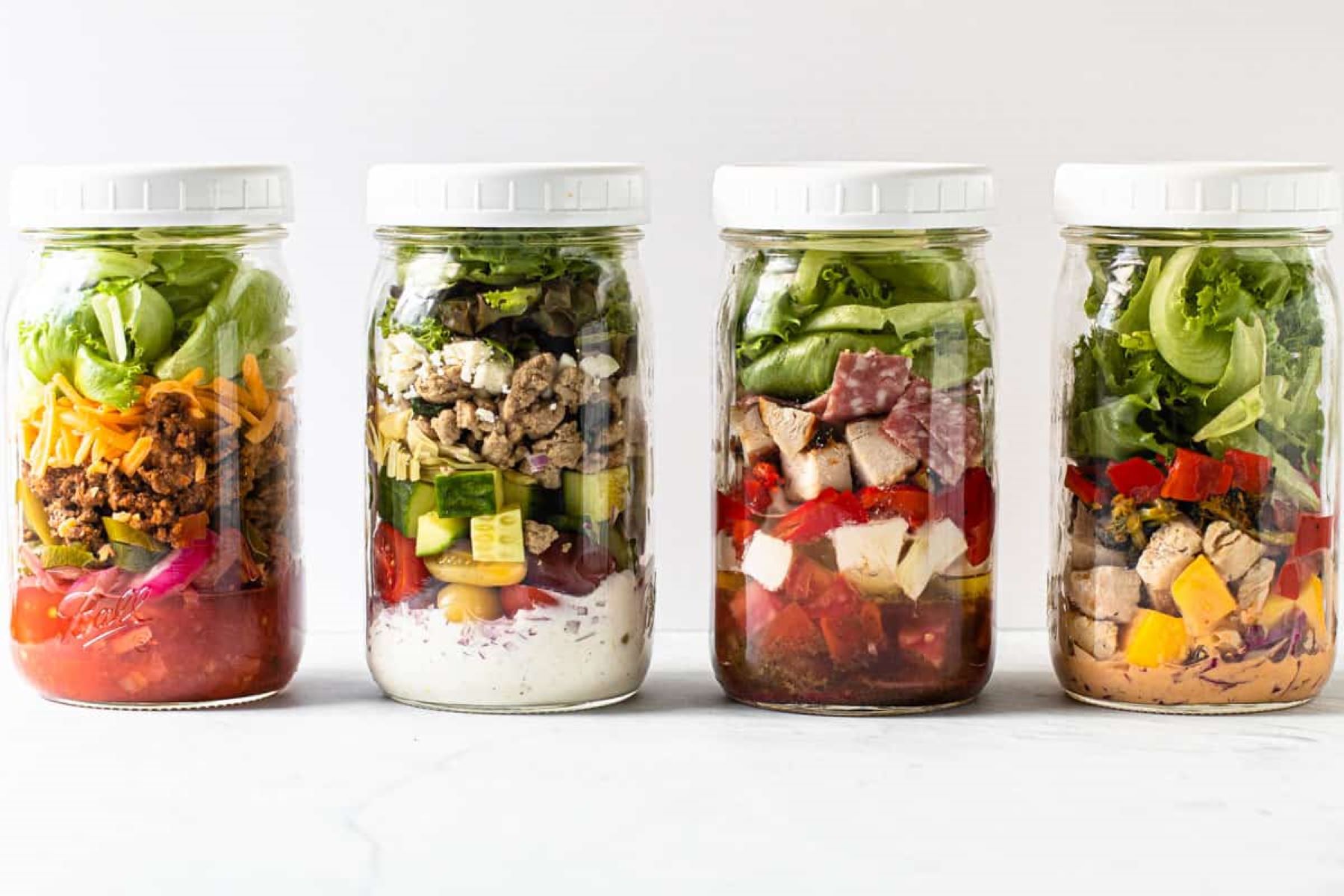
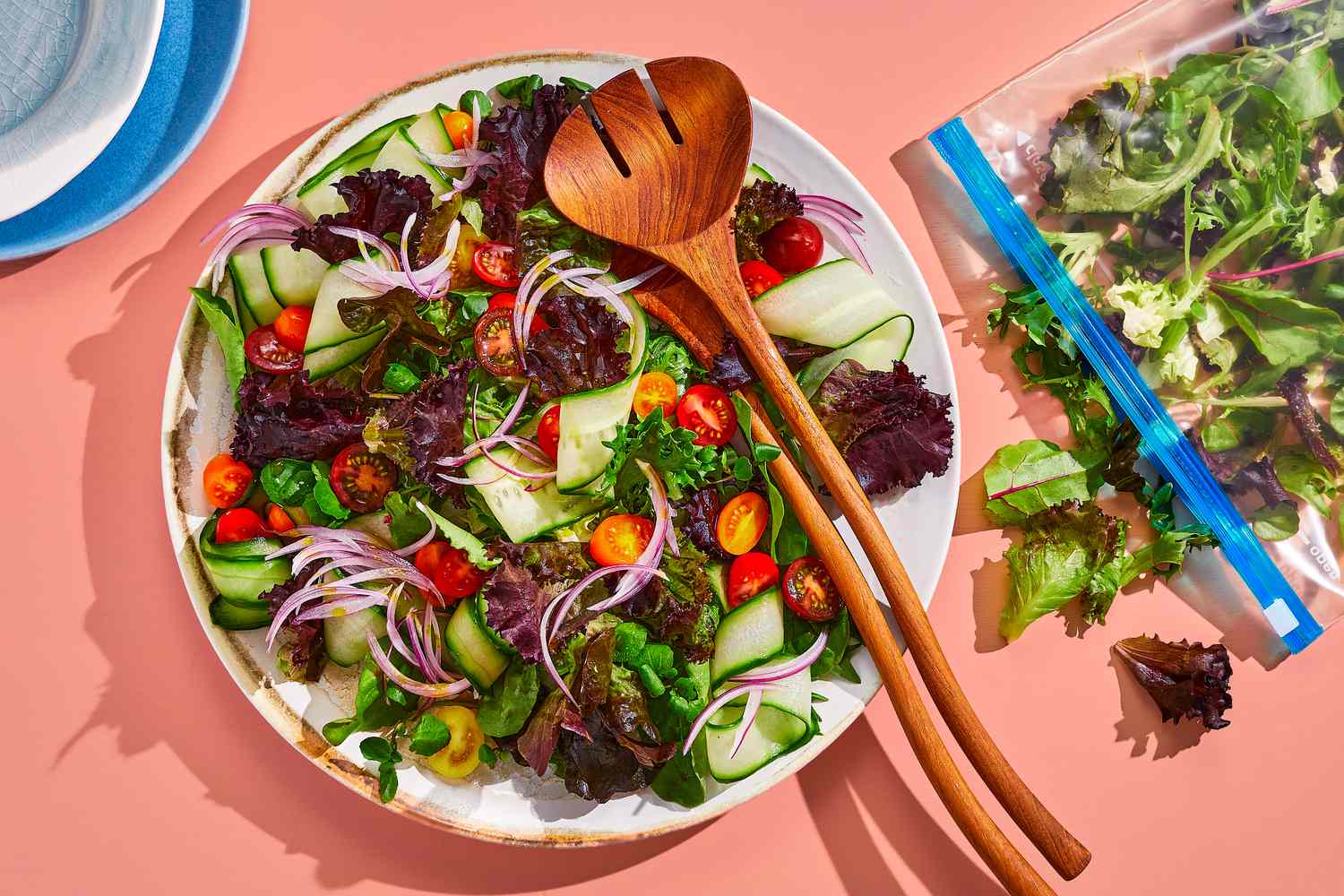
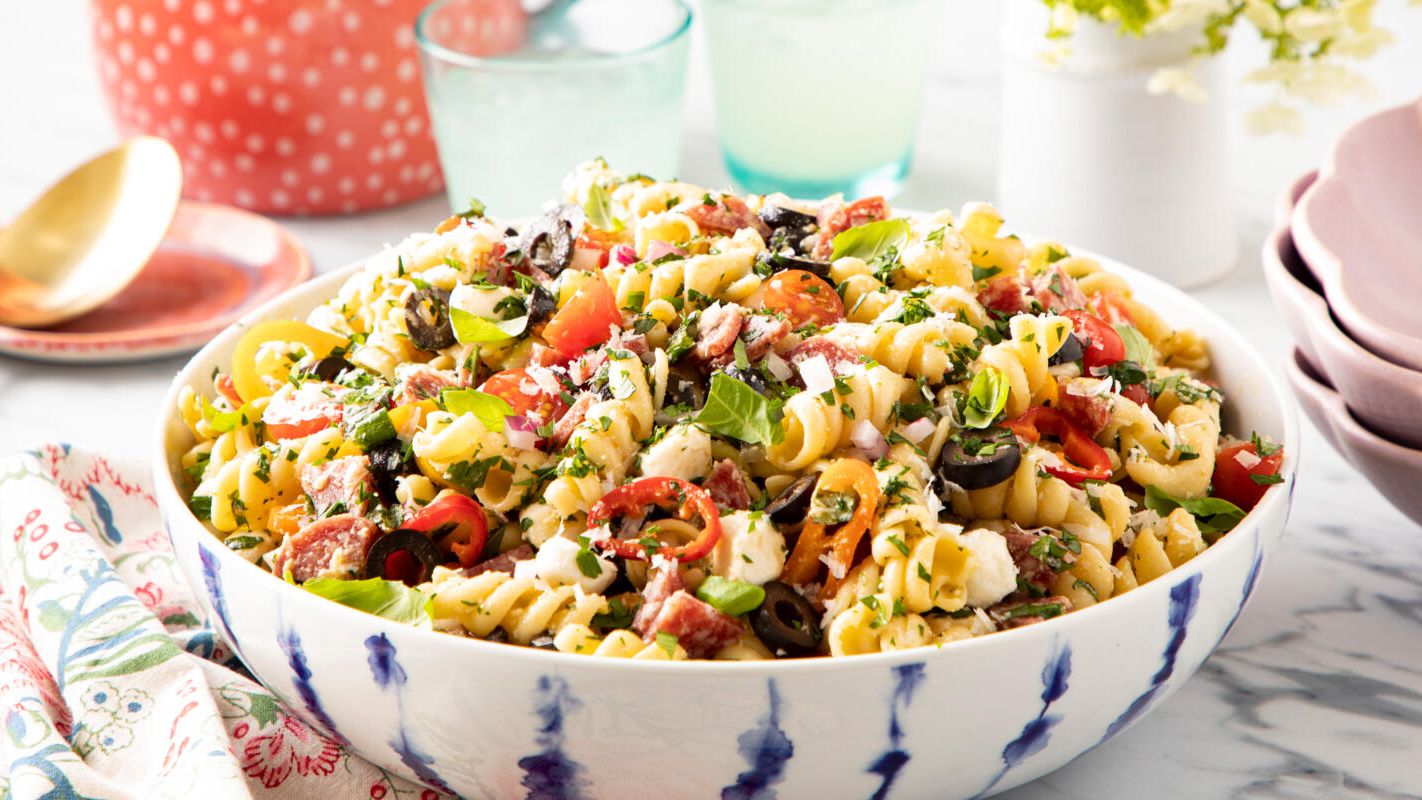


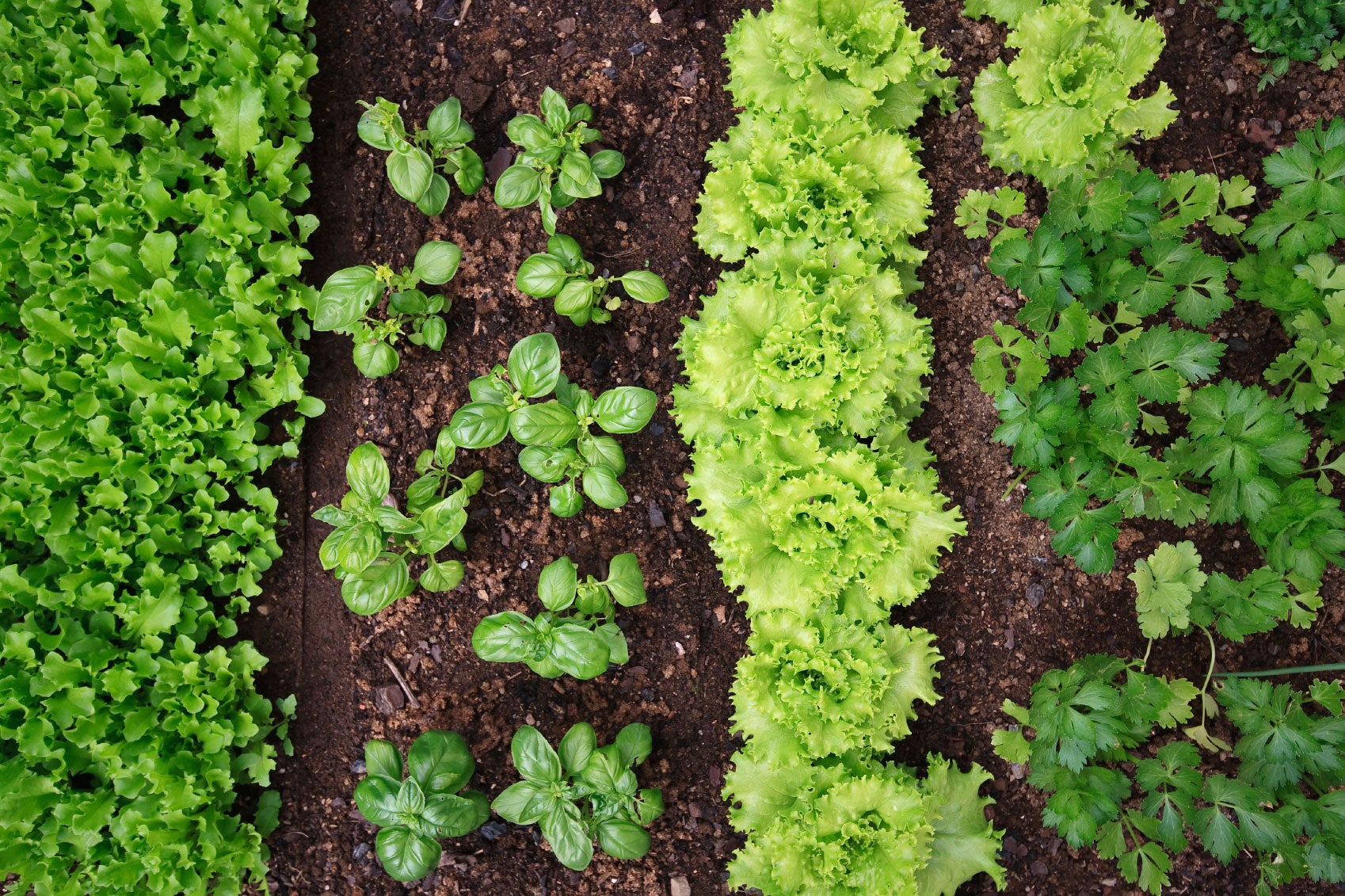
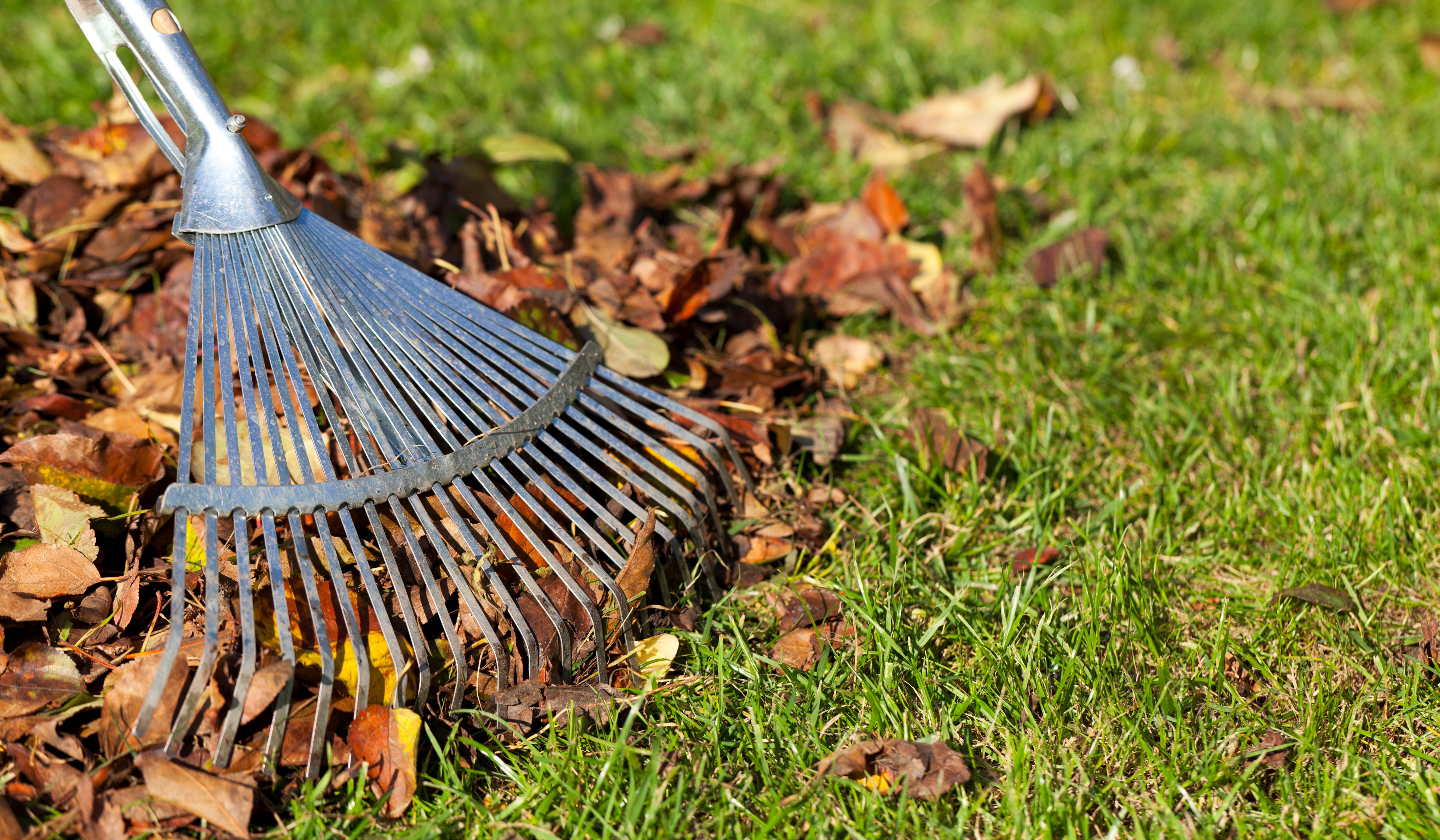
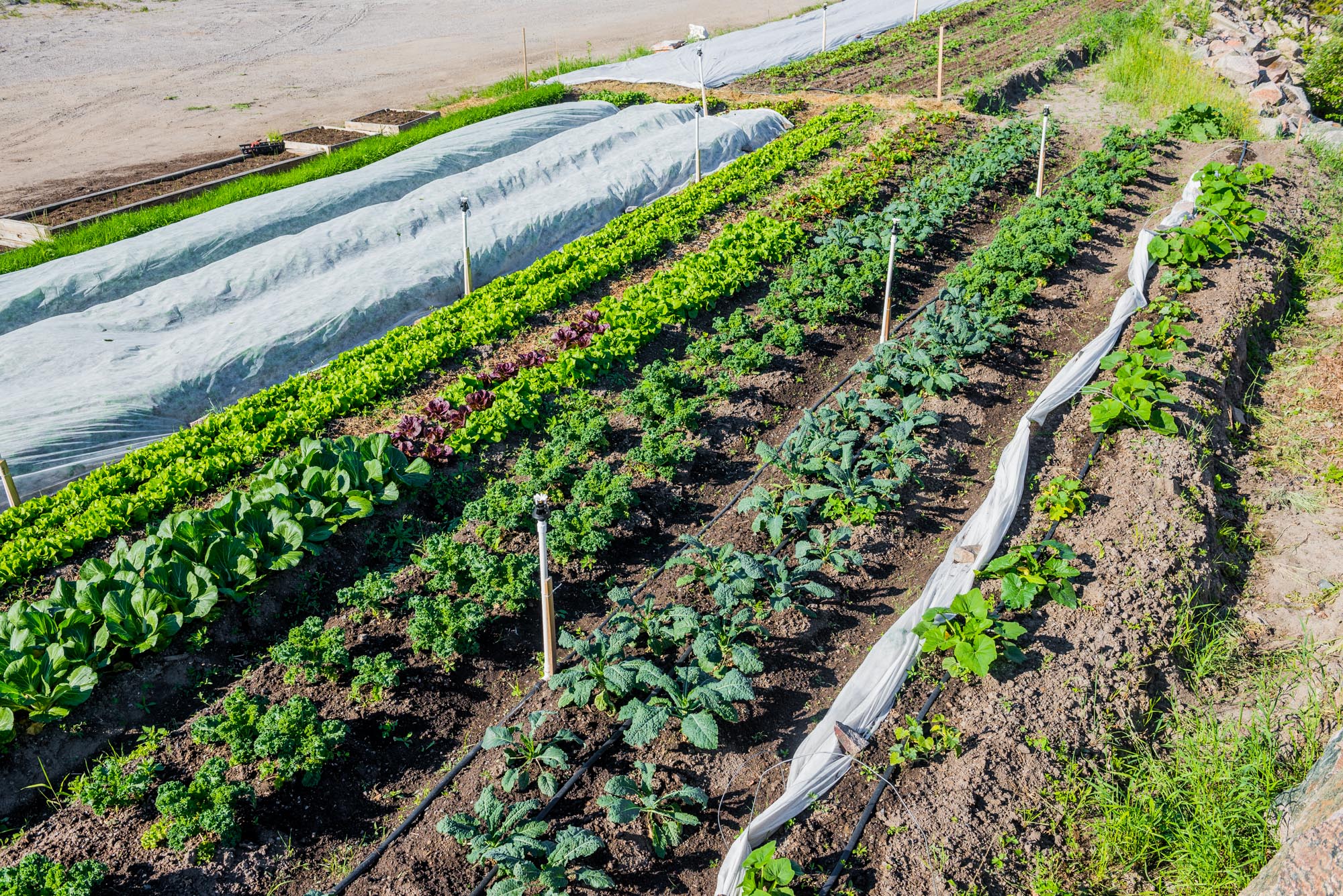


0 thoughts on “What Is In A Garden Salad”